Curragh House
Houses within 10km of this house
Displaying 51 houses.
Houses within 10km of Curragh House
Displaying 51 houses.
| House name | Description | |
|---|---|---|
| Loughburke | This house was originally the home of a branch of the Burke family. In the late 18th century it passed into the possession of the Lucas family who continued to reside there until the mid 19th century. C. and B. Lucas were in occupation in 1814 and Lewis records Lough Burke as the ancient seat of the Burke family ''now occupied by the Lucas family''. At the time of Griffith's Valuation the house was valued at £1 and James Casey was the tenant holding from the Woodwards. | |
| Rockview | In the possession of the O'Loghlens for most of the 19th century. John Kerin occupied the house in 1814, R. O'Loghlen in 1837 and Bryan O'Loghlen at the time of Griffith's Valuation. A house is still extant at this site. | |
| Inchiquin Cottage | A house on the Marquess of Thomond's estate, valued at £3 at the time of Griffith's Valuation and occupied by the Owens family in the first half of the 19th century. | |
| Clifden | This house was the home of the Burton family on the shore of Inchiquin Lough in the late 18th and 19th centuries. Wilson refers to it as the seat of Edward W. Burton in 1786. It was the residence of Lieutenant Colonel Marcus Patterson in the 1870s and in 1906. The house is still extant. |
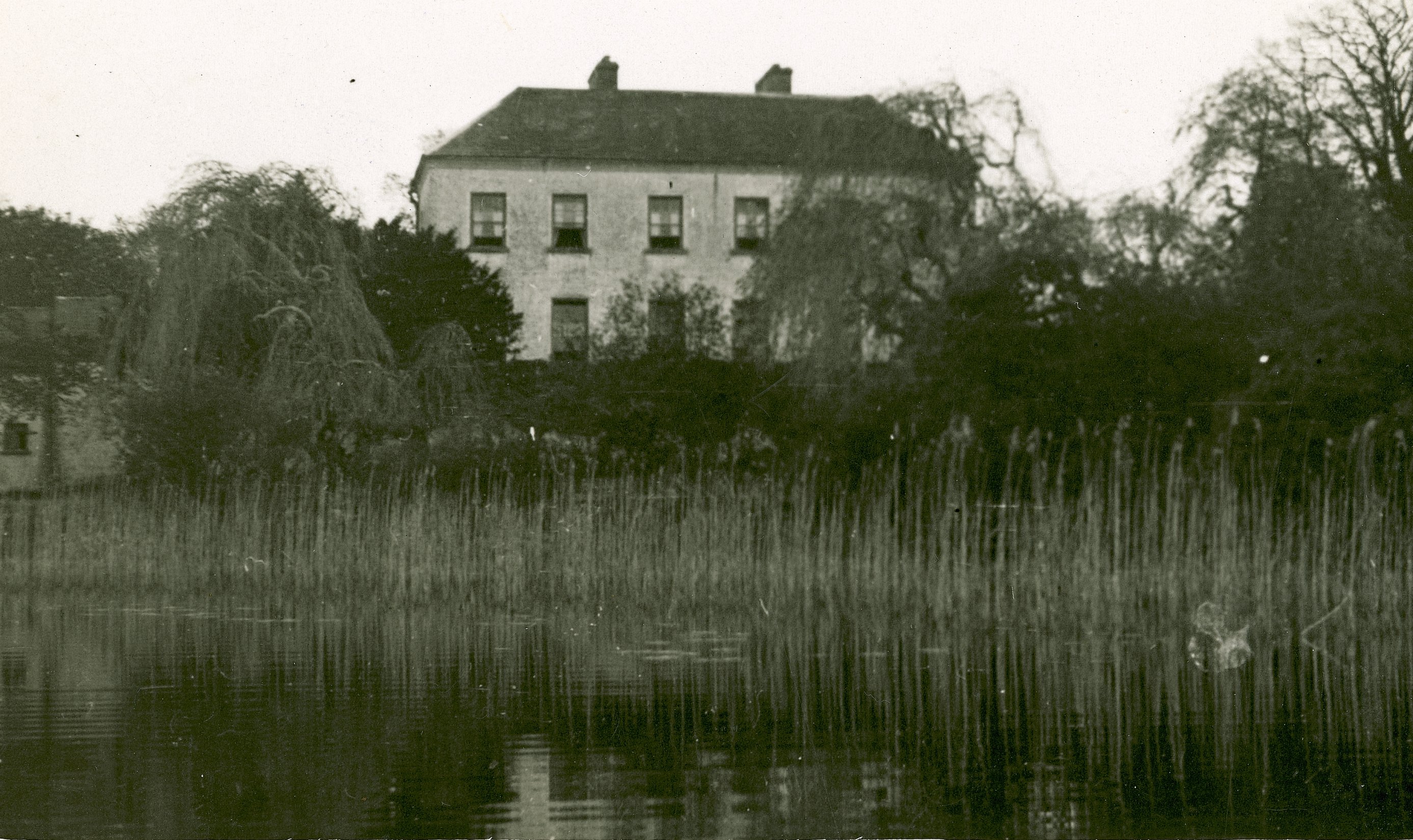
|
| Adelphi | A house on the Burton estate occupied by the Fitzgerald family and their descendants. The residence of Francis John Fitzgerald in 1814 and of F. and W. Fitzgerald in 1837. Valued at £30 at the time of Griffith's Valuation and occupied by Francis J. Fitzgerald, it passed by marriage to the Wilson-Fitzgerald family. This house was the home of Brian Blood in the mid 20th century. It is still extant. |
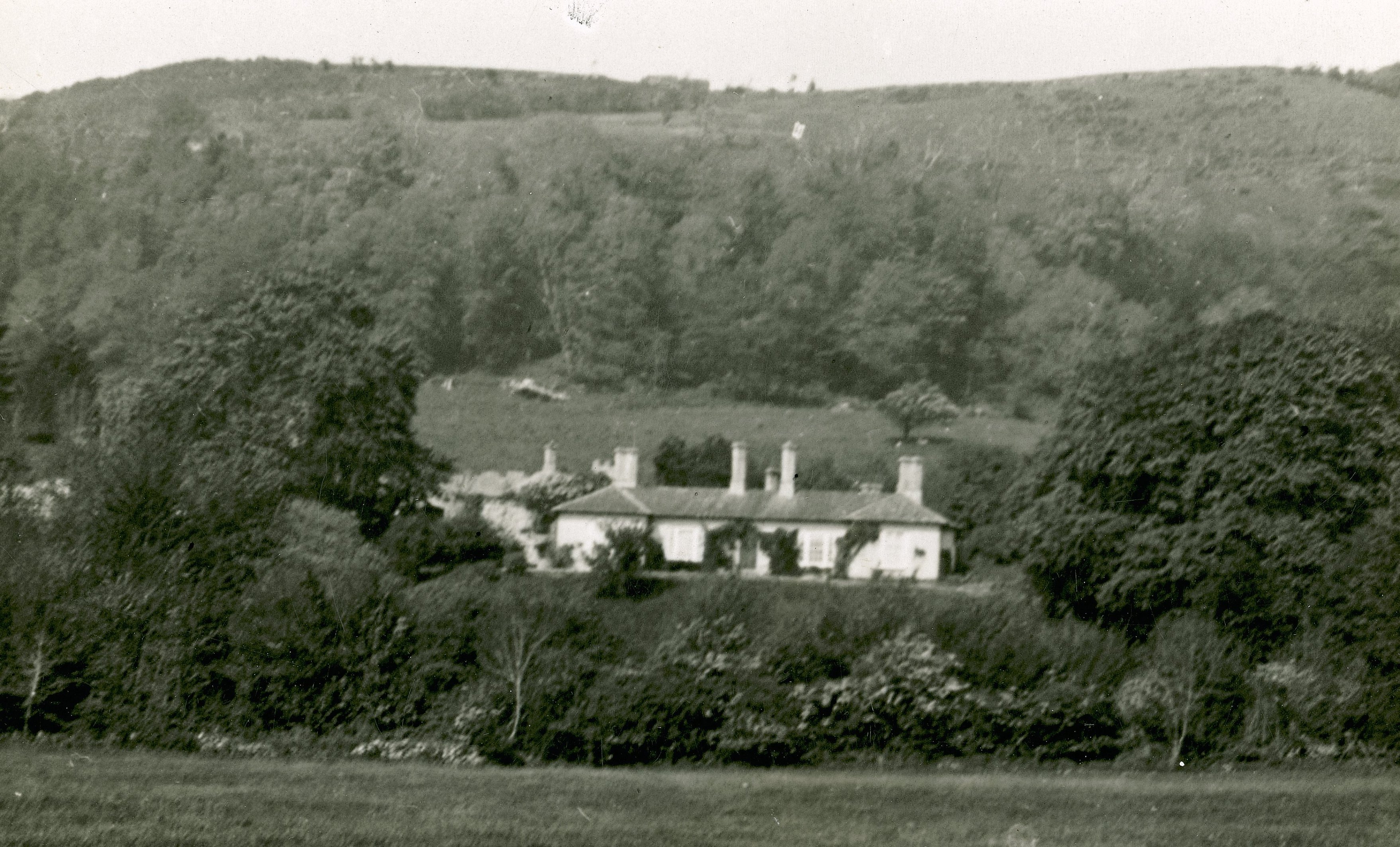
|
| Riverston | Weir writes that John Tymons was resident here in 1799. James Lysaght occupied the house in 1814 and Jonas Studdert in 1837. At the time of Griffith's Valuation Riverston was the home of Mrs Anne Bolton who held the house from James Timmins, a minor. | |
| Applevale | Neptune Blood of Applevale was the third son of William Blood of Roxton and Ann Chadwick and they lived at Applevale in the late 18th century. Their son William was murdered at Applevale in 1831 by the Terry Alts. Chartres Brew lived in the house in 1814 and George Davis in 1837 and in the 1850s. William Blood's mother was a Davis of Newcastle, county Galway.The house was leased to Michael Houlihan in 1870. This house is now a ruin. | |
| Roxton | One of the main homes of the Blood family from the mid 18th century. Wilson refers to it as the seat of W. Blood in 1786. The residence of the Reverend Frederick Blood in 1814, of Thomas Blood in 1837 and held in fee by his son, Frederick William Blood, at the time of Griffith's Valuation. By the 1870s Roxton was the home of William Darling Wilson. In ruins at the end of the 20th century. | |
| Cooga | A house on the O'Callaghan estate, inhabited by the Lingard family from at least 1837. Sold by the Lingards to the Hogans in 1922. | |
| Dromore | Occupied by Jonas Studdert, third son of Richard Studdert of Clonderalaw, in 1814. In 1795 Jonas married Mary Crowe of Dromore. The home of R. Crowe in 1837. Originally a hunting lodge Dromore became the main residence of the Crowes in the 1830s. The house was sold in 1936 and is now demolished. |
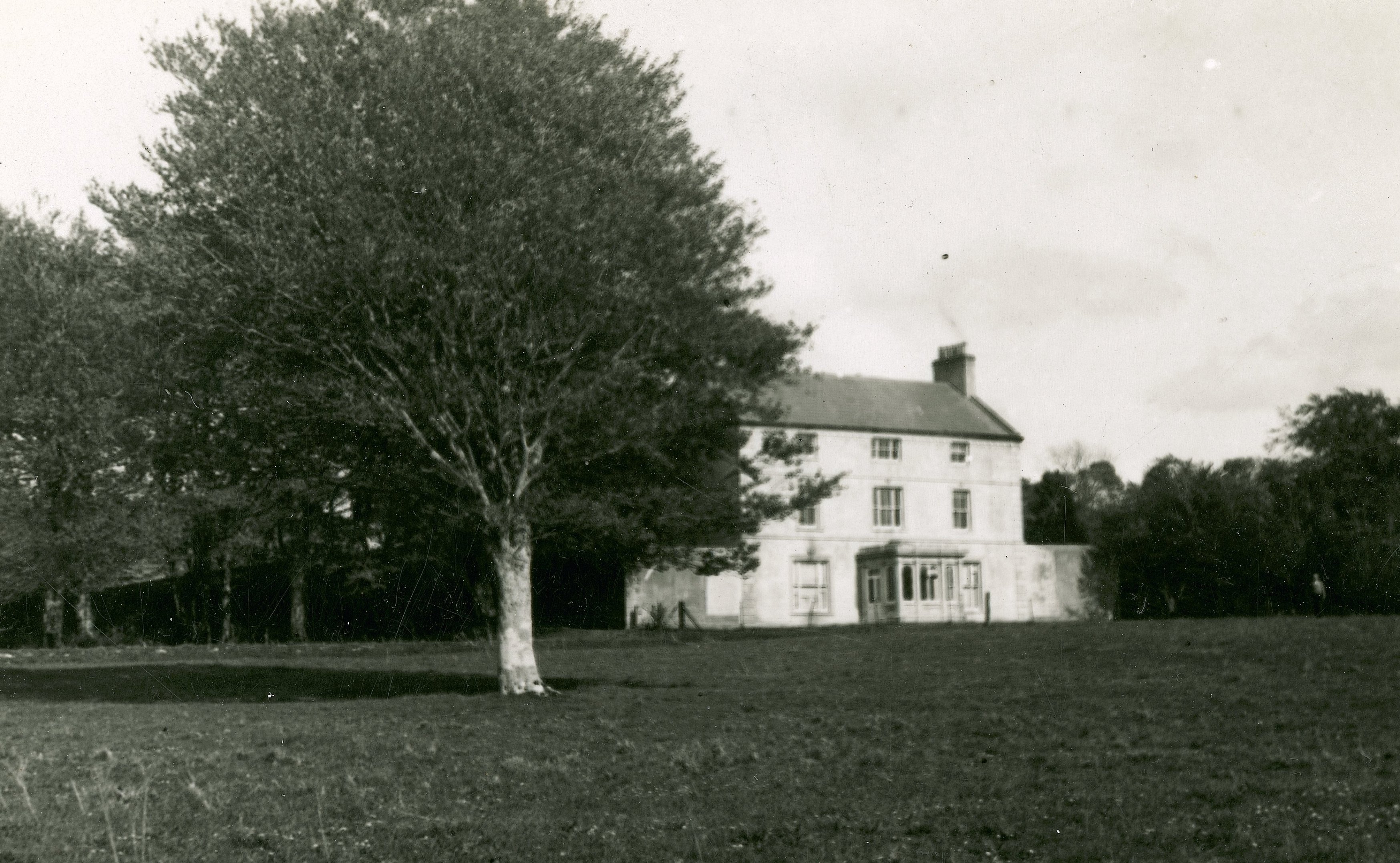
|
| Port | Home of the O'Loghlens in the latter part of the 18th century and first part of the 19th century. Hugh O'Loughlin was resident in 1814 and in 1837. The house was unoccupied at the time of Griffith's Valuation. Weir writes that the house and demesne were purchased by Jeremiah Kelly in the 1860s. |
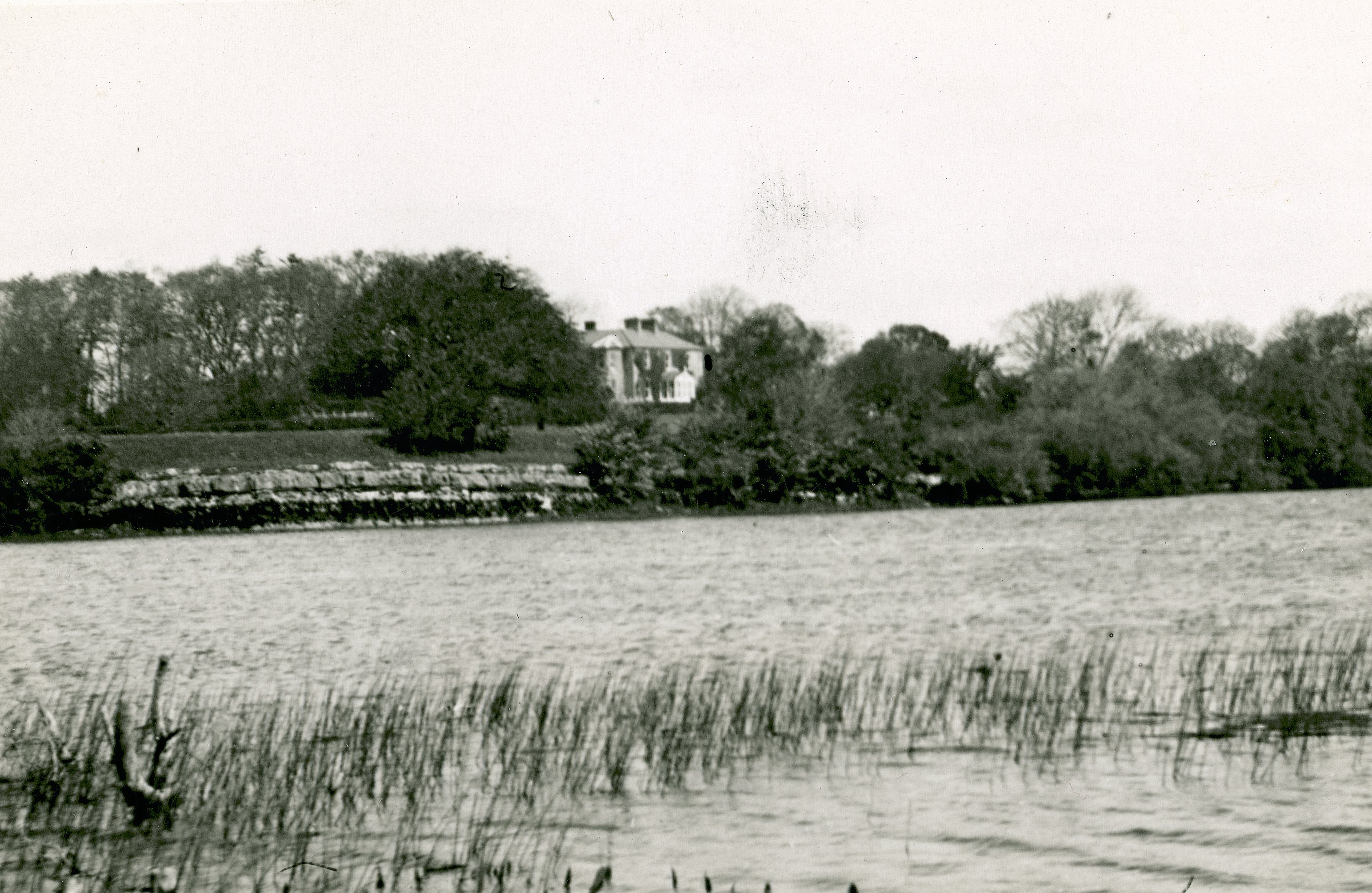
|
| Teernea | Hewitt Bridgeman, Member of Parliament for county Clare, lived here in 1837. By the time of Griffith's Valuation Myles O'Brien was leasing the house from Henry Dwyer. It was then valued at £8.10 shillings. | |
| Carhoo | A part of the Synge estates from the 18th century, the residence of E. Synge in 1837. The house was occupied by John Rutherford at the time of Griffith's Valuation and valued at £12. A house is still extant at the site. |
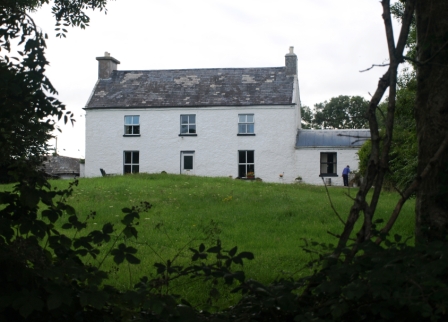
|
| Toonagh House | A late 18th century house, occupied by Mr J. O'Brien in 1814 and by C. O'Brien in 1837. By the time of Griffith's Valuation Cornelius O'Brien was leasing the house to Henry William Lucas and it was valued at £19. By the mid 1870s Cornelius O'Brien's son in law William Henry McGrath owned Toonagh. The house was demolished in the mid 20th century. | |
| Claremount House | Claremount house and demesne were part of the Barntick estate. Occupied by Jonas Studdert in 1814 and by Wyndham F. Patterson at the time of Griffith's Valuation. His lease expired on 25 Mar 1857. It was then leased to the Lynch family. One descendant was Patrick Lynch, Senator of the Irish Free State and Attorney General of Ireland 1936-1940. | |
| Barntick | A 3 storey house dating back to the 17th century, it was originally a Hickman home. The Hickmans sold the property to the Peacockes in the mid 18th century. In 1786 Wilson refers to it as the seat of Mr. Peacocke. Occupied by Daniel Powel in 1814 the house was later owned by the Roche family of Limerick and leased to the Lyons, who eventually bought the property. Now owned by the Murphy family through marriage with a member of the Lyons family. |
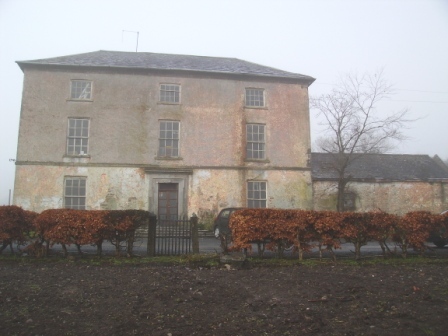
|
| Carnelly | An 18th century three-storey Georgian house, probably designed by Francis Bindon (1690-1765), home of the Stamer family in the 18th century and for much of the 19th century. In 1786 Wilson refer to it as the seat of William Stamer. It passed through marriage to Francis N. Burton of Carrigaholt and then to the O'Grady family. Carnelly House was let from 1840-1849 to John O’Brien of the Ballynalacken family, Member of Parliament for Limerick. His fifth son ‘Peter the Packer’, the notorious crown prosecutor, was born there in 1842. Peter O’Brien was appointed Attorney General in 1888, received a knighthood in 1891 and was created Baron Kilfenora in 1900. After 1922 distinguished historian Mr Justice Gleeson came to live at Carnelly and the Gleeson family are still resident. It was offered for sale in 2013. |

|
| Eden Vale | William Stacpoole moved from Annagh to Eden Vale in 1776 and this house continued to be the main Stacpoole residence until it was sold to the Clare Board of Health in the 1920s. In 1786 Wilson refers to it as the seat of William Stacpoole. At the time of Griffith's Valuation it was occupied by Richard J. Stacpoole and valued at £50. The house was a tuberculosis sanatorium in the 1940s. It is still extant. |

|
| Newhall | The original house was bought from the O'Briens by Charles MacDonnell in 1764 who greatly extended the property building on a new front, probably designed by Francis Bindon. Occupied by Robert and Florence Vere O'Brien in the 1890s though Slater notes it as a seat of Charles R.A. MacDonnell in 1894. A home of the Joyce family of county Galway in the 20th century. It is still extant and in 2013, was offered for sale. |
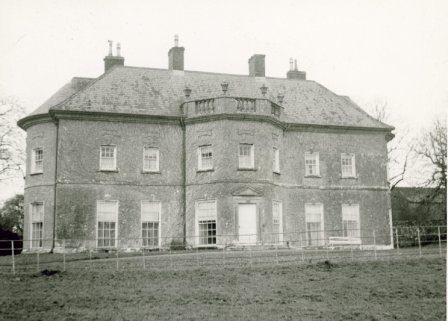
|
| Ballymacooda | A house valued at £15 at the time of Griffith's Valuation when it was in the possession of Michael Finucane who held it from Nicholas Westby. Passed into the ownership of the Commane family in the 20th century. [Grid reference is approximate] | |
| Woodstock House | A 19th century house beside the golf course at Ennis, this house belonged to the Cullinan family at the time of Griffith's Valuation. A house and leisure centre have been constructed on the demesne lands. | |
| Bushypark | A house located to the west of the town of Ennis which belonged to the Macnamaras of Ennistymon for most of the 18th and 19th centuries. Occupied by David Power in 1814. The house and 68 acres were leased to Thomas Cullinan in the 1850s. Buildings at Bushypark were valued at £18 where William J. MacNamara held 68 acres of untenanted land. The house is still occupied. | |
| Shanvogh | Weir describes this house as 18th century. It was occupied by Timothy Cullinan at the time of Griffith's Valuation. He held it from the Marquess of Conyngham and it was valued at £12. The house is still extant. | |
| Beech Park | An early 19th century house, the home of Marcus Keane and his family in the 19th century. Griffith's Valuation shows that he held the property from the representatives of Michael Finucane and it was valued at £20. The house was still in the possession of Marcus Keane in 1906. The house is no longer extant. | |
| Hermitage | Another Keane residence near the town of Ennis, occupied by Francis Keane who held it from Marcus Keane at the time of Griffith's Valuation. In July 1857 Jonathon Gregg advertised the sale of the head rent of Hermitage and the surrounding 13 acres. Hermitage was advertised for sale again in October 1860 with 75 acres of town parks the estate of Christopher Plunkett, Dorothea Tottenham was the tenant. The sale rental records Francis Nathaniel Keane as the tenant. Hermitage was sold in the 20th century by the Keanes and was the property of John and Dorothy Madden in the 1980s. | |
| Cahircalla House | Occupied in the 18th century by the Crofts, England and Maguire families. The residence of David A. England in 1814 and of Charles Mahon in 1837. Griffith's Valuation shows that he held it from John Clancy. By the end of the 1860s Wainwright Crowe was in residence. Cahircalla Hospital now occupies the site, incorporating some of the earlier buildings. |

|
| Ashline Park | Robert Mahon son of Charles of Corbally and his wife Rebecca Crowe lived here in the mid 19th century. Griffith's Valuation shows the house valued at £18 and that it was held from the representatives of Michael Finucane. In the 20th century the house was the residence of the Catholic Bishop of Killaloe for some time. Weir writes that it was demolished circa 1968. | |
| Abbeyfield | A house in the town of Ennis, named Abbeyfield on the first Ordnance Survey map and Abbeyville by Samuel Lewis. In 1786 Wilson mentions that Lord Chief Justice Paterson had a residence in Ennis town. By the early 19th century it was being leased to Thomas Crowe. At the time of Griffith's Valuation the house was valued at £44 and was occupied by Wainwright Crowe who held it from Marcus Patterson. In the late 20th century it was used as a Garda station. |
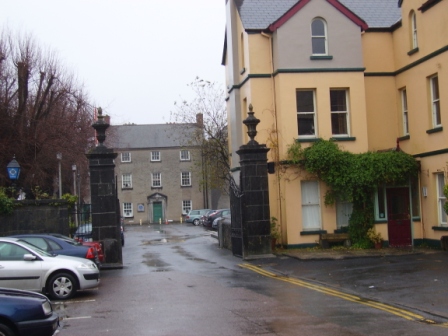
|
| Stamer Park | A home of the Stamer family in the 18th century which was occupied by Daniel Finucane, Secretary to the Clare Grand Jury, by the beginning of the 19th century. Daniel's son Michael was resident in 1837. By 1860 Captain William Stacpoole who was elected Member of Parliament for Ennis was living in the house. The house is still extant. |
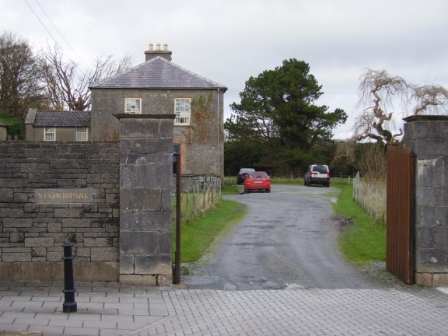
|
| Clonroad | A 17th century house in the possession of the Gore family from 1712 until 1852. The house was close to the River Fergus and had a brewery beside it. At the time of Griffith's Valuation the Gores were leasing the house and brewery to William Digges and the house was occupied by Henry Greene. In the 20th century the house which was rebuilt and extended in the mid 19th century belonged to the Knox and Merry families. | |
| Lifford House | Weir writes that in 1722 Francis Gore leased Lifford to Richard England. Patrick England was High Sheriff of the county in 1749. In 1786 Wilson refers to Lifford as the seat of Mr. England. By the early 19th century the Right Honourable Matthias Finucane was resident at Lifford House. Honoria Slattery, the common law wife, of Andrew Finucane, son of Matthias, occupied the house at the time of Griffith's Valuation. It was valued at £20 and was held from Sir Richard England. Weir writes that the house was demolished in 1965. | |
| Cragleagh | A Mahon house at the end of the 18th century, occupied by Thomas Pilkington in 1814 and by William Kenny at the time of Griffith's Valuation. Kenny held the property from Charles James/Janns and it was valued at £20. | |
| Cranagher | Originally a Bindon home this property passed to the Blood family through a marriage in the 1770s. In 1814 it was occupied by Mr James Kerin and in the mid 19th century by Giles Darcy who held it from William Blood. The house was valued at less than £2. There is a substanial house and demesne marked on the first Ordnance Survey map at Cranagher. Weir writes that a new house was started sometime in the 19th century a short distance from the original but was abandoned before completion. General Sir Bindon Blood sold Cranagher in 1905. Some farm building and modern houses exist at the site now. | |
| Castletown House | The original house is now demolished and a 20th century house stands on the site close to an old Macnamara castle. The house was occupied by Francis Macnamara in 1814 and by Robert Malcolm in the mid 19th century who held it from Colonel George Wyndham. It was valued at £10. | |
| Ballyline | Weir writes that this house was also known as Millbrook. It was occupied by Henry Butler in 1814 but had reverted back to another branch of the family by 1837 when Austin Butler was the proprietor. Austin Butler held the house in fee at the time of Griffith's Valuation, when it was valued at £15. The representatives of Theobald Butler held the house and 428 acres of untenanted land in 1906. The house was demolished by the Land Commission before the 1940s and the land divided. | |
| Tooreen | Originally a residence of Augustine Fitzgerald, occupied by John Kerin in 1814 and by W. O'Connell in 1837. James Hynes was in possession of the house in the mid 19th century. He held it from Maurice O'Connell and it was valued at £10. It is now a ruin. | |
| Ballyallia | An 18th century house, occupied by Andrew Kerin in 1814. It then became the home of Andrew Stacpoole and was owned by William Stacpoole in fee in the mid 19th century when the buildings, which included a house, steward's house, office and gate lodge, were valued at over £41. By the end of the 19th century the Vere O'Briens were living in the house. The house was considerably altered in the 1970s. | |
| Cloonteen | A house in the townland of Cloonteen is named Ballyallia on the first Ordnance Survey map. It was valued at £30 and was held by John Enright in fee at the time of Griffith's Valuation, now a ruin. Weir called this residence Templemaley House, the name by which it is labelled on the 25-inch map of the 1890s. | |
| Brookville | Occupied by Charles Janns in 1814, by J. Mahon in 1837 and by Luke Brady who held the property from Anne and Eliza Griffin at the time of Griffith's Valuation when it was valued at £16. | |
| Newpark | This house was built in the mid 18th century by the Hickman family. By 1814 it was been leased to the Mahon family who included James Patrick 'The O'Gorman Mahon', associate of Daniel O'Connell. Occupied by William Mahon who held it from Thomas Persse in the mid 19th century. Purchased by the Barron family in the early 20th century. The house now provides guest accommodation. see http://www.newparkhouse.com/newpage1.htm |
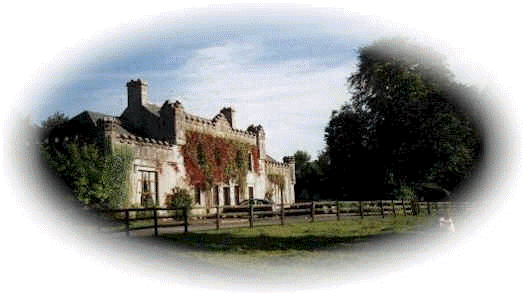
|
| Larch Hill | A house valued at £20 at the time of Griffith's Valuation and occupied by Captain Charles William Gore, fourth son of Francis Gore of Derrymore. He held the property from Lucinda Finucane. Later leased by the Finucanes to Charles Armstrong, fourth son of William Henry Armstrong of Mount Heaton and New Hall. A new house built in the 1980s now occupies the site. |

|
| Nutfield | A large three storey residence, Nutfield belonged to the Crowe family at the end of the 18th century and up to at least 1814 when it was the residence of Robert Crowe. Wilson refers to it and another house, which he calls Dromquin, as residences of the Crow family. He may be referring to Dromore House. By the mid 19th century Nutfield was the home of Sir Colman O'Loghlen who held it in fee. The buildings were valued at £40. The house is no longer extant. This house was also known as Drumconora. On the Taylor and Skinner map of 1778 it is named Nutgrove. | |
| Rosslevan | This house, close to the town of Ennis, was the residence of Francis Swyny in 1814. Rosslevan was occupied by Michael Kerin at the time of Griffith's Valuation. He held the property from the Reverend James Rynd. Rosslevan would appear to have been the home of the Davis family for some time in the 19th century. Members of the Davis family emigrated to Australia and called their new home Rosslevan. The sale rental of January 1875 records that the house had been "improved lately" and had eight bedrooms and three sitting rooms. Weir writes that Edward O'Brien, third son of the 14th Baron Inchiquin lived in the house before it was burnt in 1922. It is now a ruin. |
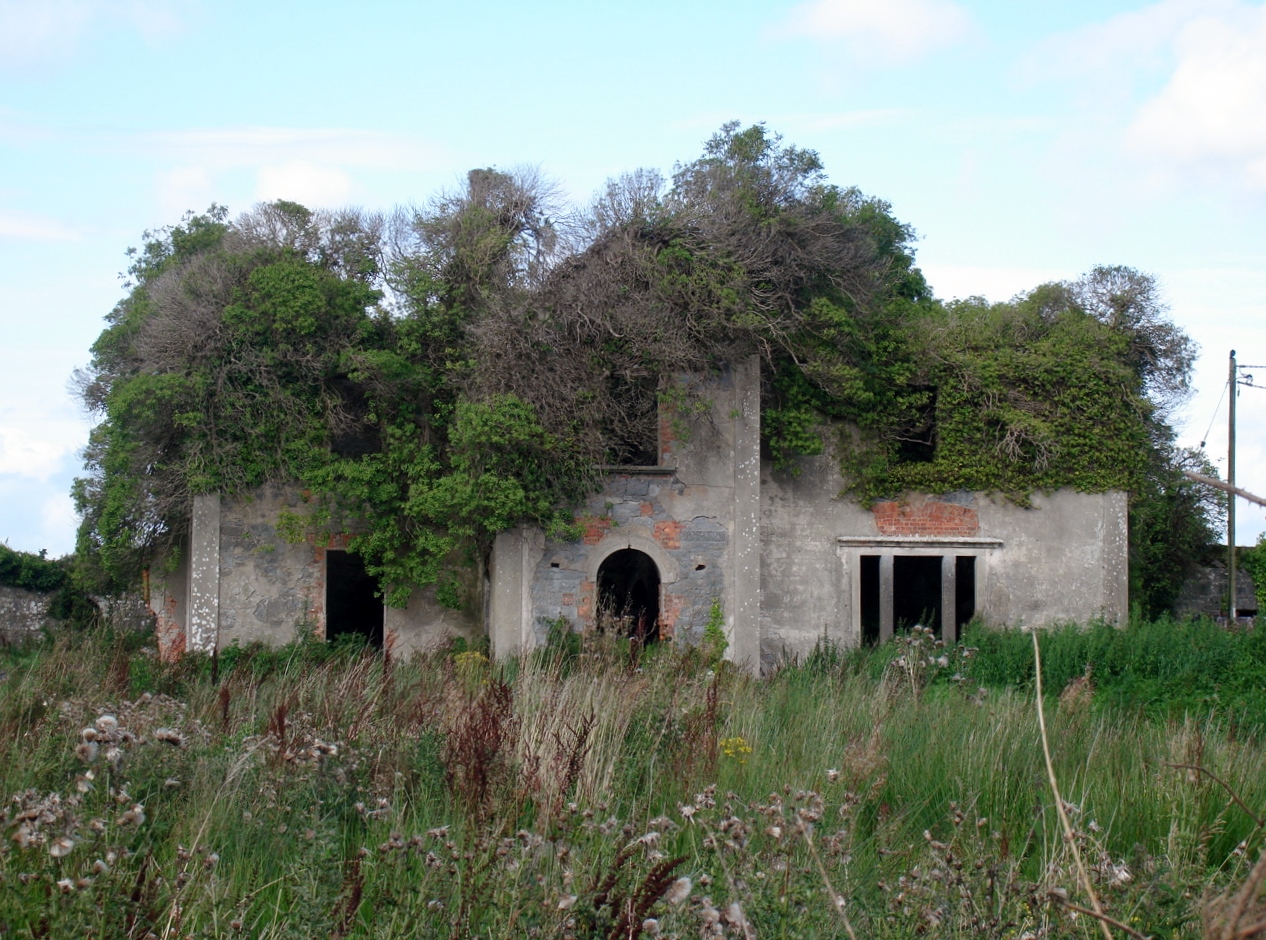
|
| Willbrook | This house was originally an Adams home, the Adams and Brews intermarried. In 1837 W.A. Brew lived here. At the time of Griffith's Valuation the buildings were valued at £5 and the house was occupied by Austin Moran and held from Lord George Quin. In the early 20th century it was the home of the Corbett family. Weir writes that the house was burnt down during the "Troubles". The present residence which was bought in the mid 20th century by Louis de Brocquy was constructed out of the stables. | |
| Harmony House | The residence of Patrick Maxwell Cullinan on the River Fergus in Ennis in the 1870s. Local sources indicate he afterwards moved to Cragleigh House. | |
| Cragmoher | A house built in the mid 19th century by Major Charles Washington Studdert eldest son of Jonas Studdert. His son Jonas was born 1857. Burnt in the late 20th century. In 1906 buildings at Killeen were valued at over £17. |
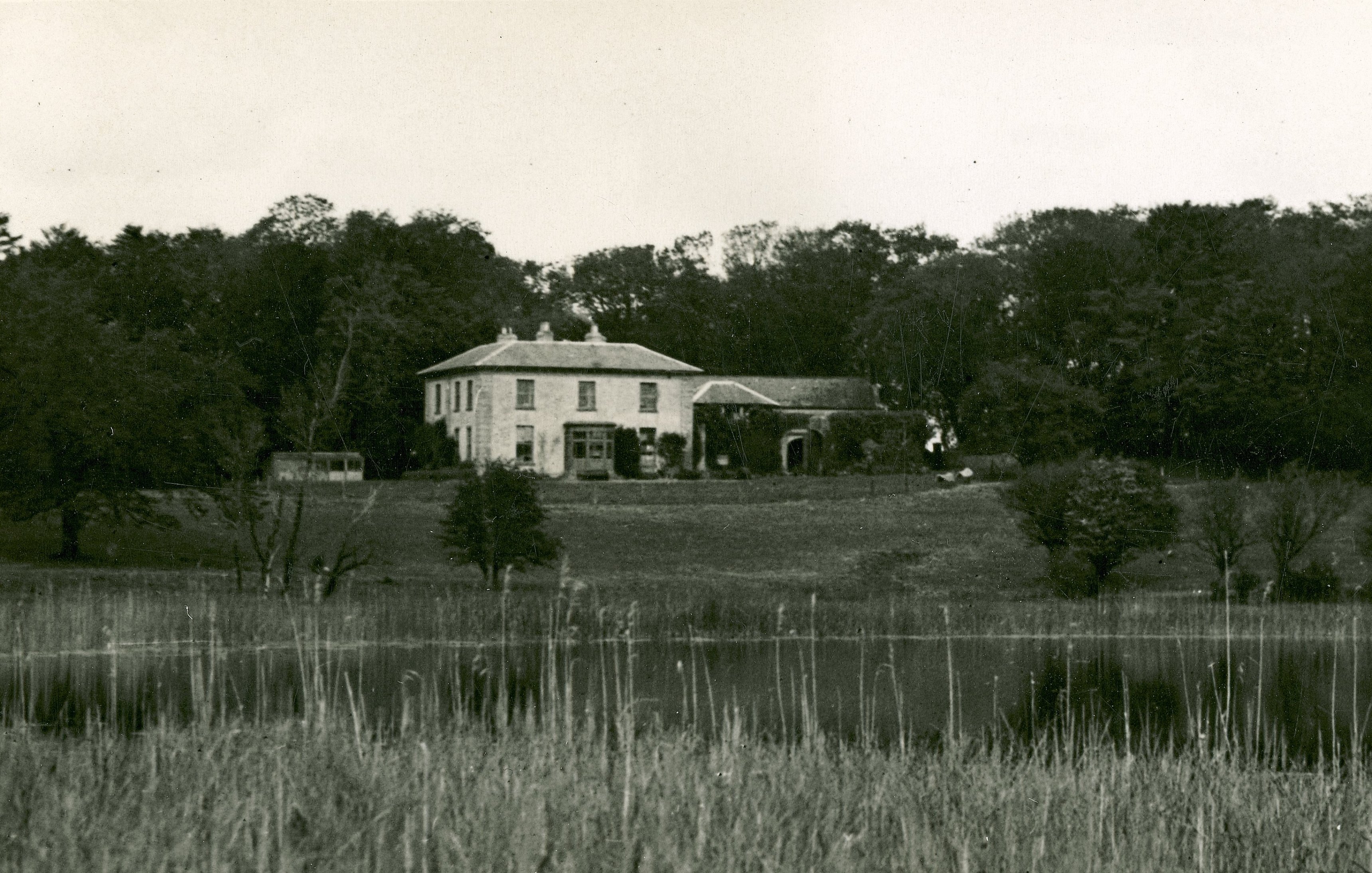
|
| Trinaderry | A house erected in the 1870s as the residence of Andrew Enright. It is labelled Trinaderry House on the 25-inch edition Ordnance Survey map of the 1890s. A house and farm are still extant at this site. | |
| Fairy Hill | James O'Brien was living in this house in 1814 and it remained in the possession of O'Briens until the 1860s. Valued at £5 at the time of Griffith's Valuation when the Reverend Daniel Lynch was in residence. Occupied by the Lynch family in the 20th century. | |
| Cappagh House | At the time of Griffith's Valuation occupied by John Curtin, valued at £12+ and held from the representatives of Stratford Kirwan. The house is no longer extant. | |
| Mollaneen House | Weir writes that this was an 18th century house. "Dysert" was occupied by Thady Brew in 1814. At the time of Griffith's Valuation George Fitzgerald held a house valued at £5 from Francis H. Synge in the townland of Mollaneen. Local sources suggest that this house was frequently occupied by the agent to the Synge estate. Weir writes that the roof of the house was removed in the mid 20th century. It has, however, since been restored and is now known again as Mollaneen House. | |
| Cappahard House | In 1786, Wilson refers to Cappaghard as the seat of Mr. Lukey. Two houses are shown in this townland at the time of the 1st Ordnance Survey, Cappahard House and Edenview House. By the 1890s the 25-inch map shows that Edenview has become known as Cappahard House and the original house has gone. This townland was the property of Thomas Persse at the time of Griffith's Valuation and included a herd's house valued at £4. In 1901 it was occupied by the Glynn family. |

